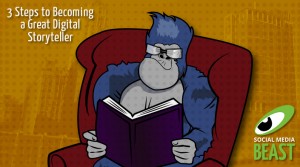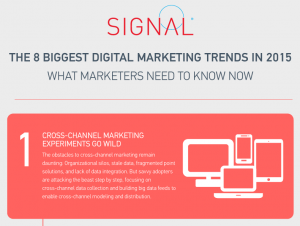As offline brands struggle to get online, your agency can help them make up for lost customers – and even find new ones. Learn more in our latest blog post.
There’s an old saying: “There are decades where nothing happens, and weeks where decades happen”.
The last few months have certainly felt this way.
So much has changed and so much is still uncertain. But if there is one sure thing that’s come out of the pandemic, it’s this:
The future is digital.
From small mom-and-pop stores to Fortune 500 companies, there is a clear realization if you want to thrive, you have to be online
As an agency owner, you’re in a prime position to help these businesses. Your core creative and digital skills are exactly what offline brands need to find growth again. With the right execution, you can even help these brands become bigger than ever before.
In this post, I’ll focus on this phenomenon and how to tap into it. You’ll learn:
- Why you must rethink the idea of a “brand experience”
- Why the website isn’t the heart of the brand experience anymore
- How content can help brands transition online faster
Offline Businesses Need Your Help
Businesses have been steadily moving online for years but Covid-19 has given greater urgency to this move. For instance, in a Mastercard survey of American small businesses, 76% of respondents said that the pandemic had prompted them to become more digital.
Even sectors that have traditionally resisted E-commerce – such as grocery – have seen massive growth in online sales thanks to the pandemic.
Non-retail businesses, too, are increasingly reliant on online services. In a Gartner survey of CFOs, 74% of respondents said that they plan to shift some of their work entirely online, i.e. remote.
Perhaps the most telling example is this Google Trends graph – search interest for the query, “how to sell online”, steadily rising in the last five years, spiked heavily as lockdown restrictions were eased across the world.
A lot of these businesses are not digital natives. They might have a basic website and some social presence, but they often struggle with establishing a clear brand online.
Fortunately, help is at hand – your agency. Your skills can help brands compelled to move online build better, more profitable businesses.
The agency business doesn’t have to be altruistic, but helping struggling businesses find new customers online is certainly something you can be proud of (and earn profits from – you have a business to run too, after all).
If you’re going to tackle this challenge, there are a few issues you need to address first, which I’ll discuss below.
How Your Agency Can Help Brands Get Online
Agencies that cater to small businesses usually have clear playbooks to help their clients get online.
However, these playbooks are usually conservative in approach and intent. Your goal is usually to help your clients establish an online presence, not to effect a complete digital transformation.
This piecemeal, conservative approach cannot work in the post-pandemic world. Being online isn’t just a value add any more; it’s a matter of survival. If you truly want to succeed in your mission of helping small businesses and offline brands, you have to adopt a playbook that’s more cohesive and aggressive.
As you bring offline brands online, there are a few issues you’ll need to address:
Transitioning the Brand Experience Online
For businesses that are not digital natives, the brand experience is a very physical thing. You go to the store and touch and feel and smell the brand. Maybe it’s a bookstore that also brews its own coffee and hosts author signings on weekends. Or a carpet store where you can touch the fabrics and even walk on it, barefoot.
In the offline world, such physical sensations often define the brand. Customers might prefer the bookstore not for its selection of books, but because of the aroma of freshly brewed coffee that lingers in the air.
The biggest challenge for such businesses is transitioning their brand experience online. You might be able to build an online store that sells books, but how do you recreate the feel of a bookstore with freshly brewed coffee and weekly events?
The solution to this problem requires a complete reevaluation of what it means to “go online”.
Right now, you might pitch clients a website and maybe a social presence to help them get online. But if you want to help a business transition its brand experience online, you have to expand your horizons. Are there any content types you can use to retell the brand story digitally? Can you create a custom search engine to help people browse an online store better – as they would in a real store?
For example, BottleRocket, a popular New York-based wine retailer, has a tool to zero-in on the right kind of wine based on your preferences. This creates a better browsing experience than endlessly scrolling through a product list.
BottleRocket’s “SearchRocket” feature makes finding the right wine easier
Think of all the touchpoints that make up the brand. Go beyond superficial qualities and dig deeper into what really makes the brand. The bookstore with the attached coffee shop might not be popular only because of the coffee, but because of its sense of community. In that case, can you use some sort of online forum to recreate the same sense of community?
Remember that for smaller offline businesses, their brand is often their strongest asset. Large businesses might look and feel the same, but smaller brands usually have their own vibe.
Transitioning this “vibe” online is crucial if you want to help them grow online.
On that note…
Go Beyond Websites
A website might be the heart of a business’ online presence, but it doesn’t have to be the heart of its brand experience.
In fact, if you really want to transition an offline brand experience online, you’ll have to look beyond the website.
Take Philadelphia-based Uncle Bobbie’s as an example. This bookstore/coffee shop has a sparse website, but maintains a vigorous online presence on a number of community-focused channels. It regularly hosts lit chat sessions on Twitter, curates selections on BookShop, and organizes Zoom meetups to replicate the sense of community online.
Uncle Bobbie’s uses community-focused platforms to recreate its brand experience online (Image source)
The website is at the periphery of this bookstore’s brand. Rather, it uses different tools, platforms, and content-types to recreate its brand experience digitally. There’s a distinctive vibe to its online presence – small, cozy, and homely – exactly what the store offers to its offline customers.
Another famous example is Gary Vaynerchuk’s Wine Library. While he might be better known as an influencer today, Gary Vee got his start reviewing wines on YouTube. His reviews essentially replaced the in-store experience of asking the resident sommelier for recommendations. The Wine Library website was only the point of transaction; the entire brand experience was built on Gary’s YouTube channel.
The very first episode of Gary Vaynerchuk’s Wine Library TV
Essentially, you have to reimagine the “brand” as a distributed experience, where customer interactions neither start nor end on the website. This means investing in building communities, building an organic social following, and creating content that can find an audience outside the website.
Go beyond the website and you’ll find it much easier to bring brands online.
Rethink ‘Content’
What do you think of when you think of “content”?
Blog posts and eBooks? Newsletters and tweets? Instagram posts and YouTube videos?
The truth is that the definition of “content” has changed a great deal in the last half-decade. A 50-word comment left on a Reddit thread is as much “content” as a 1,000-word blog post.
If you want to help brands win online, you have to rethink content – what it is, how you create it, and where you distribute it.
You can broadly divide content into several categories:
- Owned content: Blog posts, eBooks, guides, etc. that you host on properties you control such as your website or blog.
- Social content: Content that’s created for and shared primarily on social media websites – tweets, Facebook posts, Instagram images, etc.
- Distributed content: Content that you share on websites you don’t directly control, such as Medium articles, Quora answers, etc. You can also think of this as “leased” content since you’re effectively “leasing” your content to these platforms.
- Community content: Content that’s created primarily for community-focused websites such as Reddit, ProductHunt, Hacker News, etc.
- Live content: Content that has a live audience such as livestreams, Zoom webinars, etc.
Based on the brand, you’ll want to use a mix of different content types. Say, you might use blog posts and YouTube how-to videos for a B2B brand. For a consumer brand, you might turn to Instagram posts and Zoom webinars.
Your goal should be to break down the brand into its core components and use content to replicate it online. If the brand calls “community” one of its core competencies, you might want to focus more on community-focused content. If “technological excellence” is the brand’s forte, focus on creating in-depth eBooks and guides.
Keep an open mind about content – both as a practitioner and as an agency trying to win clients. Too many marketers get pigeonholed into treating content as an intensive, long-form endeavor when a single tweet or Reddit comment can have as big an impact on the brand.
Just ask Wendy’s – they’ve completely transformed their brand with Twitter, once even earning 200k followers with a single tweet.
Different Approaches for Different Brands
Right now, there are two types of businesses looking for help with their online presence:
- Digital Laggards: Businesses that have a presence online, but haven’t really embraced it fully.
- Digital Migrants: Businesses that are coming online for the first time.
Both these groups have different concerns. The Digital Laggards need rapid digital transformation. Their online presence is usually muted and their content production scarce.
For such businesses, your solutions should focus on:
- Replicating the brand experience digitally
- Scaling up content production – in quality, quantity, and variety
- Establishing a presence on platforms and channels used by their target customers
In contrast, Digital Migrants are just getting their start online. These are typically small businesses that have either eschewed a digital presence altogether, or relied on stopgap approaches.
You’ll find that such businesses are a lot more receptive to your ideas. You’re also in the best possible position to help them, especially since you can build their online presence from scratch and don’t have to deal with any legacy issues.
For these businesses, focus on:
- Establishing a website experience that matches their brand
- Investing in high-value owned content that can become a cornerstone of the brand experience
You can later supplement this high-value content with community/social/distributed content, but your first priority should be to establish their brand online.
Over to You
It’s anybody’s guess how the coming months will play out, but one thing is clear: the digital shift is here to stay. Customer behavior, transformed over months of lockdown and uncertainty, is likely to reward online brands more and more.
As an agency, you’re uniquely positioned to help brands make this digital transformation. It’s good for your business, but it’s also good for your clients – you can help them make the transition online and get back their growth.
A win-win if there ever was one.
While you’re helping brands transform themselves, it’s also a good time to effect your own transformation. If you’re still using disparate systems to manage your agency, you’re losing time and money.
Switch to a comprehensive, all-in-one agency management system like Workamajig and see how it can help your agency. Tap the button below to get your free personalized demo right away:
Digital & Social Articles on Business 2 Community
(40)





